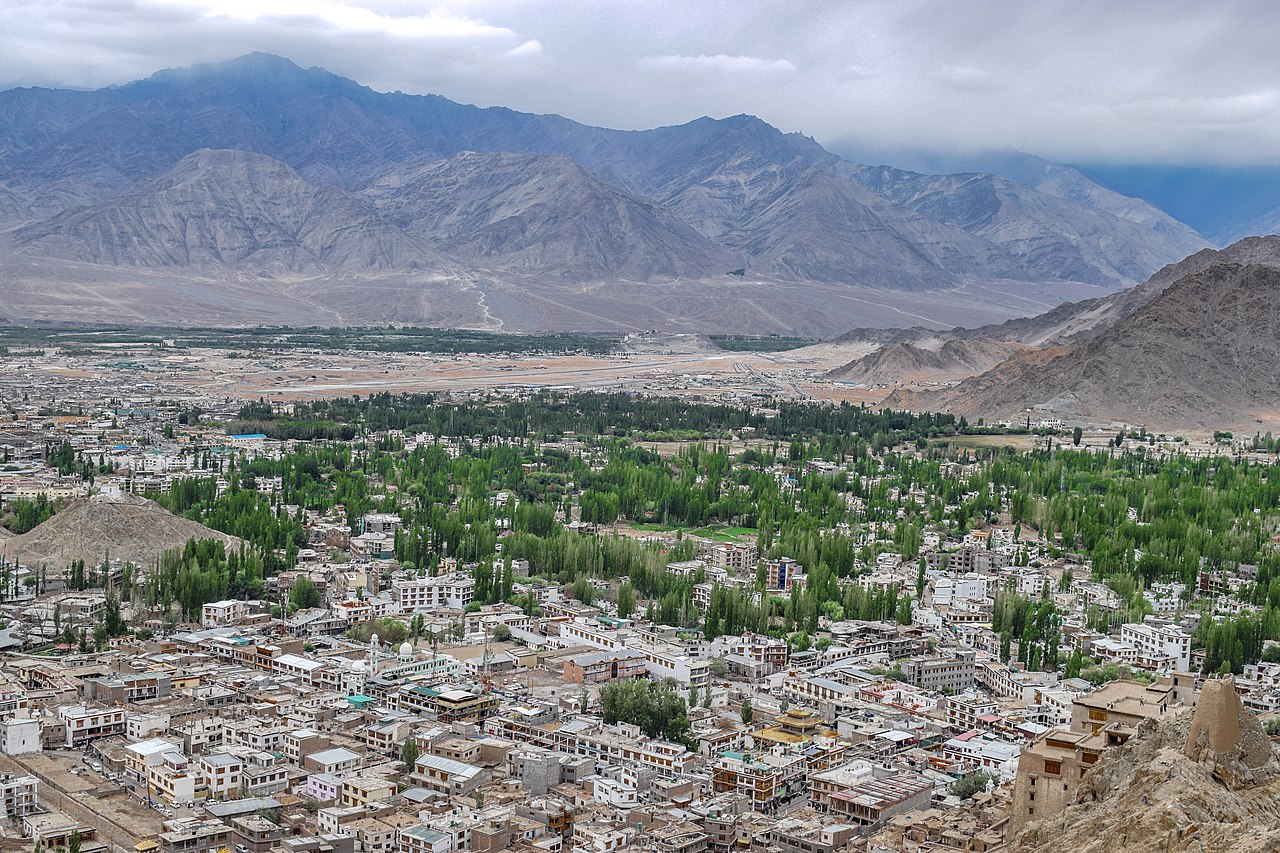Nestled in the lap of the mighty Himalayas, Leh, the capital of Ladakh, is a destination that unfolds like a fabled dream for travelers seeking a blend of cultural richness, spiritual serenity, and awe-inspiring landscapes. At an altitude of approximately 3,500 meters (11,500 feet) above sea level, Leh is not merely a geographical marvel; it is a cultural crossroads where ancient traditions meet the contemporary spirit of adventure.

The journey to Leh itself is an adventure. Visitors often reach Leh via flights that navigate through the dramatic mountainous terrain, offering aerial views of snow-capped peaks and deep valleys. The Leh Kushok Bakula Rimpochee Airport, surrounded by towering mountains, serves as a gateway to this high-altitude haven.
Leh’s cultural landscape is shaped by its predominantly Tibetan Buddhist population. The old town, with its labyrinthine lanes and traditional Ladakhi architecture, exudes an old-world charm. The Leh Palace, a 17th-century architectural masterpiece, overlooks the town from a vantage point, offering panoramic views of the surrounding mountains and the convergence of the Indus and Zanskar rivers.
The monasteries that dot the landscape around Leh are not just religious sites; they are repositories of art, history, and spiritual wisdom. Thiksey Monastery, resembling the famed Potala Palace in Lhasa, Tibet, stands as a testament to the rich cultural ties between Ladakh and Tibet. The Hemis Monastery, hidden in a gorge, is renowned for its annual Hemis Festival, a vibrant celebration of Ladakhi culture that attracts pilgrims and travelers from far and wide.
Leh’s spiritual ambiance extends beyond its monasteries. Shanti Stupa, a white-domed structure perched on a hill, radiates peace and tranquility. It offers panoramic views of Leh and the surrounding mountains, making it a popular spot for meditation and contemplation. The 14th-century Shey Palace, with its giant golden Buddha statue, adds to the spiritual allure of the region.
Adventure enthusiasts find Leh to be a playground of possibilities. Surrounded by towering peaks and high-altitude desert, the region offers trekking, river rafting, and mountain biking experiences that cater to various levels of expertise. The magnetic hill, where the optical illusion makes it appear as if vehicles defy gravity and roll uphill, adds a touch of mystery to the adventure.
The confluence of the Indus and Zanskar rivers, just outside Leh, is a mesmerizing sight. The two distinct rivers, one carrying silt and the other crystal-clear, merge to form a breathtaking confluence of colors. This natural phenomenon symbolizes the confluence of cultures and landscapes that define Ladakh.
While Leh is accessible mainly during the summer months (May to September) when the roads are open, the winter months transform the region into a silent wonderland. The frozen landscapes and the annual Chadar Trek on the frozen Zanskar River attract adventure seekers looking to experience the unique beauty of Ladakh in its winter coat.
In conclusion, Leh stands as a testament to the harmonious coexistence of natural beauty, cultural heritage, and the spirit of adventure. Whether exploring ancient monasteries, engaging with the warm-hearted locals, or immersing oneself in the breathtaking landscapes, Leh beckons travelers to embark on a journey that transcends the ordinary and delves into the extraordinary beauty of the Himalayas.



